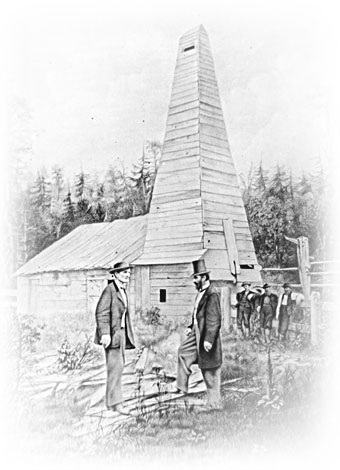#40 Drake Oil Well
1859
First practical oil recovery system using salt-well drilling techniques and modern pipe-driving methods, marks beginning of US petroleum industry
The drilling of this oil well marks the modern phase of the petroleum industry. A series of revolutionary technological changes, unforeseen even by the most prophetic, followed. Drake demonstrated practical oil recovery by applying salt-well drilling techniques, including the use of the derrick, and invented the modern method of driving iron pipe.
While excavation for oil dates back to the 1500s in this area, its uses were not explored until the 1800s. It was first sold as a curative potion and then developed into a illuminant by the 1850s. Oil could be siphoned off surface pools near Oil Creek, producing 18 gallons a day for lighting and lubrication of local sawmills. Drake was brought in by investors in 1853 to dig for oil. He struck oil only 69 feet down on August 27, 1859. The well yielded an average of 1,000 gallons daily for three years. The first export was in 1866, relieving the first glut in the market. By 1865 oil prospectors came to Titusville to seek their fortunes, often employing the spring-pole method. Petroleum became a favorite speculative commodity and emerged as a source of concentrated energy and abundant chemical compounds.

Landmark Location
Pa. Historical & Museum
Commission Rd #3, Box 7
Titusville, PA. 16354
Owner, if different than above
Drake Oil Well Museum
Visiting Info
Not available
Ceremony Notes
October 1979
